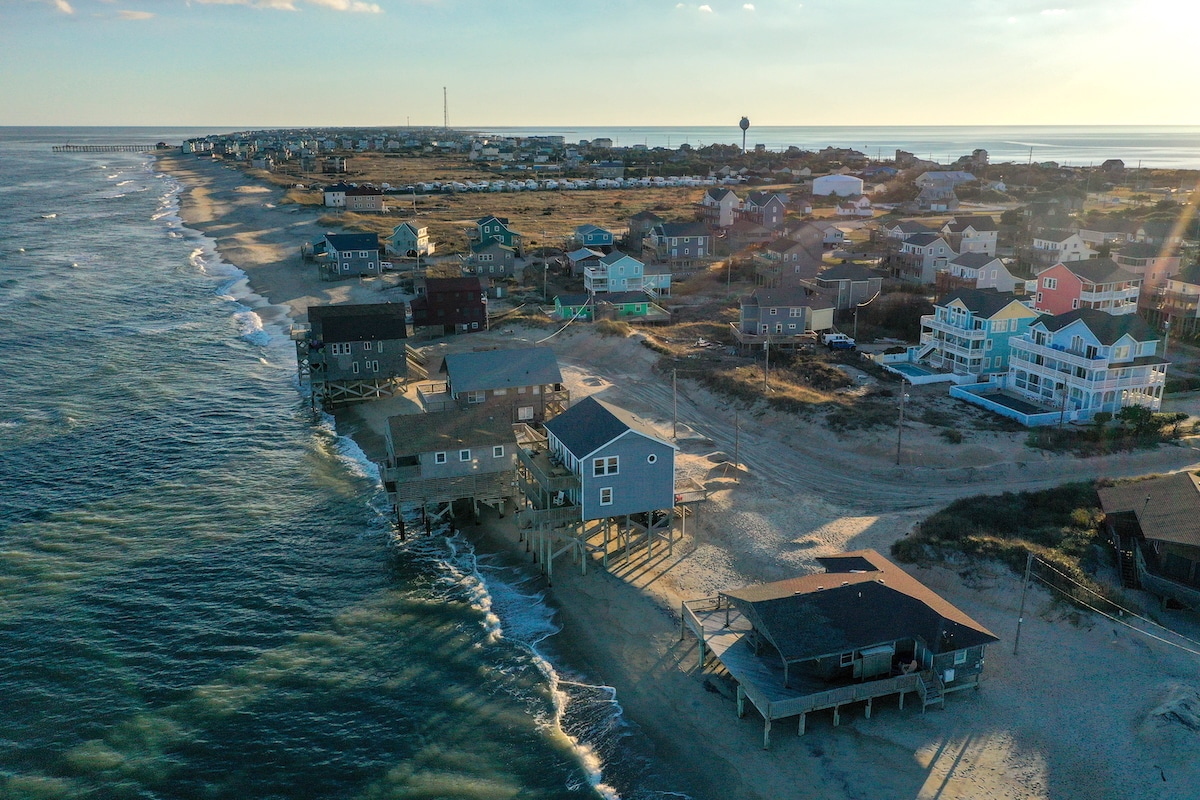The barrier island community of Rodanthe, North Carolina is experiencing one of the highest rates of erosion and sea level rise on the U.S. East Coast, seen on March 13, 2023. Jahi Chikwendiu / The Washington Post via Getty Images

Why you can trust us
Founded in 2005 as an Ohio-based environmental newspaper, EcoWatch is a digital platform dedicated to publishing quality, science-based content on environmental issues, causes, and solutions.
While the Paris Agreement targets no more than 1.5 degrees Celsius of global warming compared to pre-industrial levels in order to curb the worst impacts of climate change, a new study warns that the amount of sea level rise that will come with that amount of warming could still lead to “catastrophic” inland migration.
In the study, published in Communications Earth and Environment, scientists analyzed data from previous warm periods on Earth, along with recent observations of ice sheet masses and numerical modeling.
According to the study, even the current level of warming around 1.2 degrees Celsius may be too much for ice sheet mass balance, and remaining on the current trajectory of warming could cause multiple ice sheets to quickly collapse and increase sea level rise by several more meters.
Efforts to limit the global temperature increase to 1.5°C under the Paris Climate Agreement may not go far enough to save the world’s ice sheets, according to a new study led by @geogdurham.bsky.social 👉 www.durham.ac.uk/news-events/…
— Durham University (@durham-university.bsky.social) May 20, 2025 at 5:32 AM
“Limiting warming to 1.5°C would be a major achievement and this should absolutely be our focus,” Chris Stokes, lead author of the study and a professor at the University of Durham’s Department of Geography, said in a statement. “However, even if this target is met or only temporarily exceeded, people need to be aware that sea level rise is likely to accelerate to rates that are very difficult to adapt to — rates of one centimetre per year are not out of the question within the lifetime of our young people.”
Melting ice sheets could pose major threats to coastal populations if humanity cannot maintain warming within a safe limit for ice sheets. The study authors have estimated that a safe limit for ice sheet equilibrium could be closer to or below 1 degree Celsius of warming compared to pre-industrial levels.
“What we mean by safe limit is one which allows some level of adaptation, rather than catastrophic inland migration and forced migration, and the safe limit is roughly 1 centimeter a year of sea level rise,” said Jonathan Bamber, professor at the University of Bristol in the UK, as reported by Mother Jones. “If you get to that, then it becomes extremely challenging for any kind of adaptation, and you’re going to see massive land migration on scales that we’ve never witnessed in modern civilization.”
According to the researchers, about 230 million people live within one meter of sea level, and these populations will be most affected by melting ice sheets. Millions of people would be displaced with even one meter of sea level rise, but warming above 1.5 degrees Celsius could lead to rising sea levels amounting to multiple meters.
Scientists have already warned that the Paris Agreement targets are becoming less likely to be reached, and 2024 — the hottest year on record — was the first calendar year to hit 1.5 degrees of warming.
Currently, the world is on track to reach between 2.1 and 2.9 degrees Celsius of warming by 2100.
By signing up, you agree to the Terms of Use and Privacy Policy, and to receive electronic communications from EcoWatch Media Group, which may include marketing promotions, advertisements and sponsored content.
